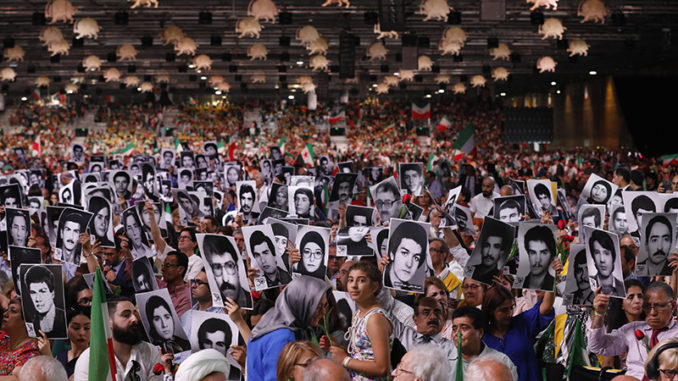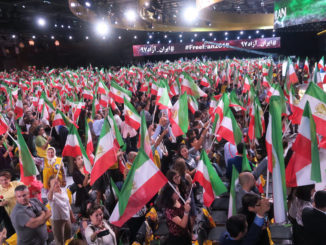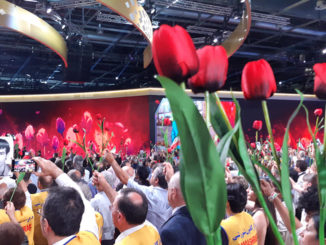
In a simultaneous interactive conference to mark the 30th anniversary of the 1988 massacre of political prisoners in Iran, the Iranian communities in 20 major cities and capitals throughout Europe and North America will examine the roots and prospects of the nationwide uprising in Iran and will call on the international community to support the prosecution of the mullahs responsible for the 1988 massacre and suppression of the ongoing protests and uprising in Iran.
The event will take place on Saturday, August 25, 2018, starting at 5 pm CEST (11 a.m. ET) and will be broadcast live in Persian, English, French, and Arabic on the Iranian Resistance’s social networks and websites, bringing thousands of members and supporters of the Iranian Resistance across the world together.
It is part of the Justice-Seeking campaign for the 30,000 victims of the massacre, mostly members and supporters of the Iranian Resistance group, the People’s Mojahedin Organization of Iran (PMOI/MEK), launched by the leader of the Iranian Resistance, Maryam Rajavi, in 2016.
The campaign demands an independent U.N. inquiry into the massacre in order to bring to justice those responsible for a crime widely cited by human rights experts as one of the worst crimes against humanity since World War II, by putting them on trial in International Criminal Court (s).
The Massacre
In 1988, Iran’s regime then Supreme Leader Ruhollah Khomeini issued a fatwa for the execution of 30,000 political prisoners, many of whom had already served their prison sentences and were awaiting release.
The regime formed “Death Commissions” in major cities across Iran to put the prisoners through show trials regarding their political affiliation. No defense lawyer was allowed and most trials took a few minutes only. After executions, the victims’ bodies were buried in mass graves, which according to Amnesty International the regime continues to destroy to cover up the evidence of its crimes.
Even Khomeini’s then-successor Hossein Ali Montazeri was critical of the massacre, as a leaked audio recording proves, and called it the greatest crime in the history of the Islamic Republic. He was then dismissed as Khomeini’s heir and put under house arrest for the rest of his life.
The Uprising
Those responsible for the massacre still hold high-ranking positions in the Iranian regime and are responsible for suppressing the uprising that sprung up in December 2017. The mullahs often launched brutal attacks against demonstrators, but this has not stopped the Iranian people who are loudly calling for regime change.
These protesters, much like the victims of the 1988 massacre, are putting their lives on the line to bring freedom and democracy to Iran.
The Iranian communities will participate in the event in the following cities: Paris, London, Berlin, Frankfurt, Stockholm, Amsterdam, Rome, Oslo, Brussels, Bern, Ottawa, Toronto, Vancouver, Bucharest, Helsinki, Gothenburg, Aarhus, Stuttgart. It will feature talks from survivors of the massacre, representatives from Iranian Associations, along with many Western lawmakers and prominent personalities, who will condemn the Iranian Regime for its human rights violations and encourage the international community to adopt a firm policy towards the Iranian Regime.




